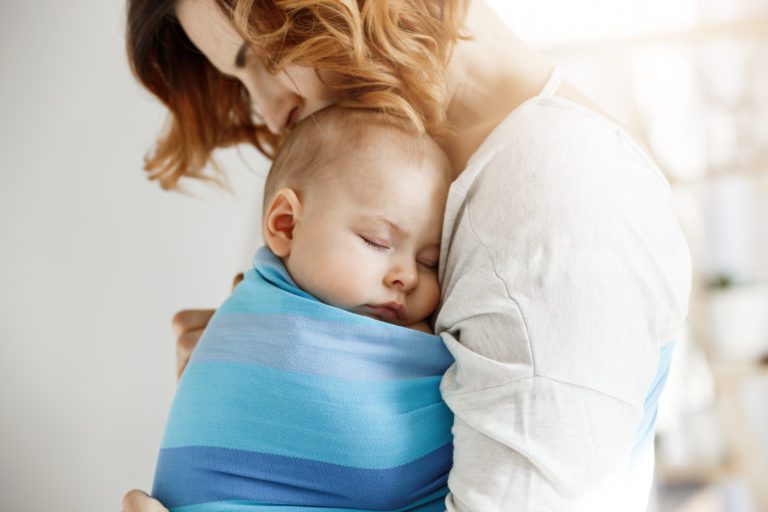Following baby’s birth, the next most exciting moment is baby’s first car ride. Baby can’t even leave the hospital without being strapped into their car seat—and that’s going to be an infant car seat that may be part of a larger travel system to help you tote and roll them everywhere you go. We’ve assembled the best advice from the experts on essential baby items you’re likely to need when getting out of house or home.
Baby’s First Car Seat
Keep your baby/toddler in a rear-facing car seat for as long as possible. All infants should ride rear facing through at least 1 year and longer as possible, as much as up through age 2+
If your baby was born in the upper percentiles for height and weight, the American Academy of Pediatrics (AAP) suggests that your newborn remain rear-facing until they reach the highest weight or height limit allowed by the car seat manufacturer.
Tip: A convertible car seat typically has a heavier weight limit, and your child may be able to ride rear facing as long as their length and weight are appropriate for the seat. Find the right seat and size for your child at safecar.gov.
Buy a car seat that:
- Fits your child’s appropriate age, weight, and height
- Passes inspection. Get your installed seat inspected at a certified car seat inspection station
Roll With Baby
Strollers open the big wide world for babies as they roll along. You’ll need one that is stable and safe. Test to ensure your stroller can’t unlock and fold while baby is seated. Babies can become entrapped, have their fingers pinched or cut, or get injured when strollers topple over. For these reasons, the AAP recommends prioritizing the following features in any stroller you buy:
- Lightweight
- Easy to fold and store
- Wide wheelbase
- Lockable brake without a brake release near baby’s hands or feet
- Harness that includes a seat belt
- Footrest
Baby’s Carrier or Sling
Get out and about hands-free with a front carrier or a sling during baby’s earliest months. Baby will love to feel your closeness and smell your familiar scent. Some slings even double as nursing drapes for those moments you nurse while running errands or visiting with friends.
Front or parent-facing baby carriers are generally considered safer than slings as they don’t have the same suffocation risks of slings when used improperly.
If your baby was born early, or has respiratory problems, avoid slings, front carriers, and backpacks as well as other upright positioning devices— these can make it harder for baby to breathe, say the experts at the AAP.
Also, avoid carriers that can push your baby’s body into a C-shape as this makes it harder for baby to breathe. Ensure baby’s face—especially their mouth and nose—is not covered by any of the fabric or straps.
Tip: Wait until after baby is born and then “borrow” various carriers from other parents before you “buy” to determine the best kind of carrier for you and baby. Wider straps will help distribute baby’s weight on your body. A carrier with a padded frame will feel more cozy for yourself and for baby.
If you opt for a sling, wait until baby is 4 months old to reduce suffocation risks; and have a friend help you when you’re learning to use it according to the manufacturer’s instructions. Slings require ongoing adjustment. Avoid any carrier or sling where baby’s head rests with their chin upon their chest, which can block their airway.
Wait until baby can confidently hold their head with their neck for longer periods of time before using a backpack carrier. Each time you wear baby in the carrier, ensure the straps are secure and aren’t pinching baby’s arms or legs. Also, consider a sunshade for a front or back backpack carrier. Avoid “spilling” baby out of the carrier if you bend down to pick something up as you may also inadvertently hurt your back. Ensure that all openings in any backpack carrier or sling is padded and doesn’t pinch or impede baby’s movements or breathing.
With just a little gear and preparation you and baby will be off on the kind of adventures that build lifetime memories.
YOU MAY ALSO LIKE: Losing Weight in the Fourth Trimester







Comments are closed.